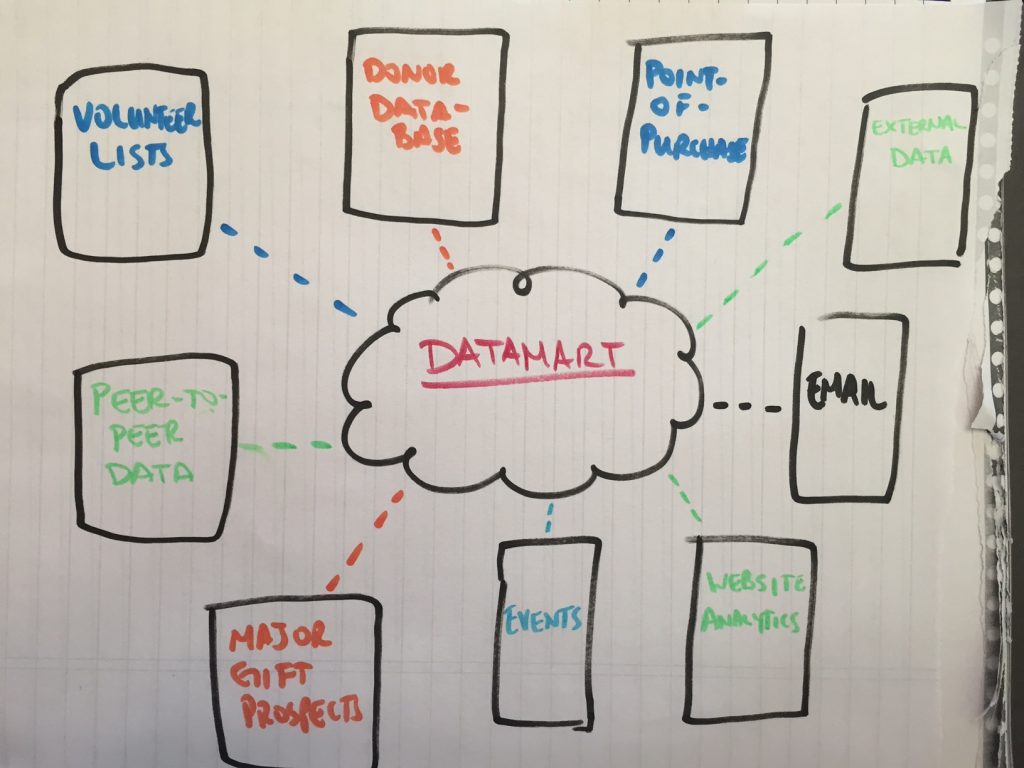What data points does your nonprofit use to develop insights and new strategies to better engage your constituents?
If you’re like most nonprofits, it probably depends which department head you ask.
- Development maintains the donor database that houses biographical data (i.e., name, address, etc.) and transaction data (i.e., date and amount of most recent, last and largest gift, event ticket purchase, etc.).
- Marketing maintains your website and has a host of online analytics that show web traffic sources, click-through rates, conversion rates by page, open rates for e-mail, etc.
- Volunteer Services probably has their own database (or Excel file) that tracks biographical data, and if you’re lucky, number of volunteer days/hours, area of interest, etc.
- Stewardship maintains the newsletter list and data, along with event invitation lists, previous attendees and ticket purchase data.
As I’m sure you can guess, the problem is that these are mostly likely all different systems with data in different formats, and each department probably has different business rules for what gets added to their systems, when, how and by whom. This means that you can’t harness the power of all of these unique data elements in an aggregated way to better understand and communicate with your constituents.
This is why savvy nonprofits are making investments (either on their own or alongside their fundraising/marketing agencies) to build data warehouses that let them standardize all of the various data elements and relate them to one another to develop robust constituent profiles that incorporate all of the various data elements from across the organization.
What’s the real world value of investing in a data warehouse?
There are probably dozens of examples that others could share to answer this question. I shall provide two from an organization I’m familiar with. Leveraging a data warehouse, this organization was able to identify two trends that helped them better engage their constituents:
1. Males have 50% higher lifetime value than females: This helped the organization to re-evaluate their acquisition strategies and to change their acquisition list selection strategy to generate more value there. They are also now testing higher ask strategies via direct mail and e-mail to male constituents.
2. Donors who are also volunteers are 134% more valuable than those who are exclusively financial contributors: This led the nonprofit to develop new strategies to more rapidly and effectively engage volunteers. It also helped their board understand the need for greater investment to expand their volunteer program. Not only did it provide value in volunteer hours, but they were able to quantify the potential long-term revenue potential of growing their volunteer program.
These are two fairly basic and simple examples of how nonprofits used data warehouses to develop sophisticated donor insights that increased value for their organizations and the people they serve.
Does your organization use a data warehouse? What insights have you been able to develop, and how have they increased value for your organization?
